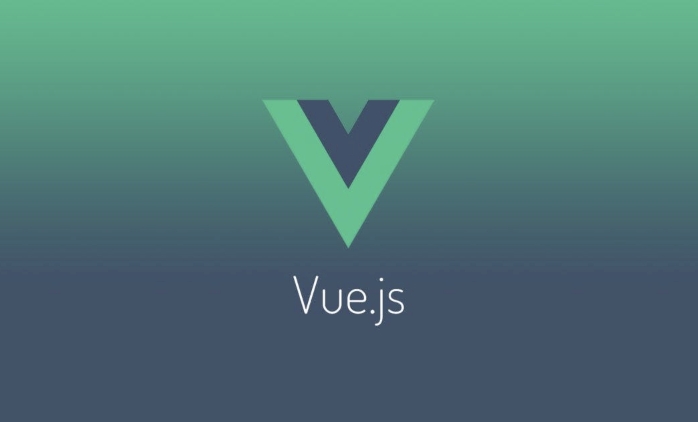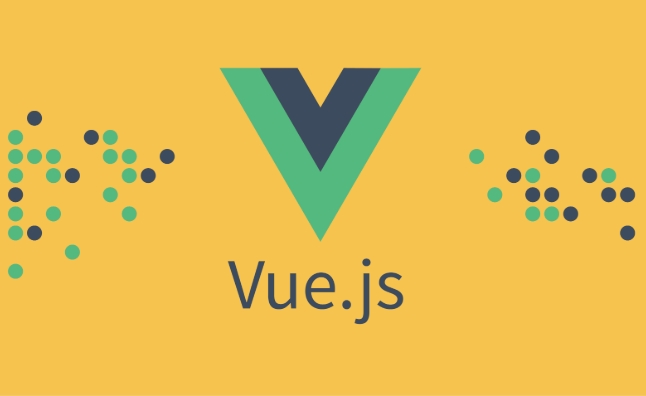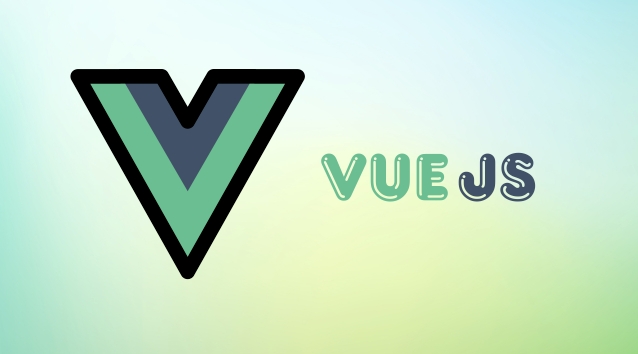The default slot is used to insert a single content. The content passed by the parent component will be directly filled in the

Slots in Vue are a powerful feature that let you compose components by injecting content into them from the parent. Think of them as placeholders in a child component that can be filled with markup or content defined in the parent.

They're especially useful when building reusable UI components like modals, cards, or layout wrappers — where the structure is consistent, but the content inside may vary.
1. Default Slots (Single Slot)
The simplest form of a slot is the default slot . You place <slot></slot> in the child component, and any content passed by the parent will go there.

Child Component (ButtonWrapper.vue):
<template>
<button class="wrapper">
<slot></slot>
</button>
</template>Parent Component:

<template> <ButtonWrapper>Click me</ButtonWrapper> </template>
Results:
<button class="wrapper">Click me</button>
If no content is passed, the slot remains empty — or you can provide fallback content inside the slot.
<slot>Default text</slot>
2. Named Slots
Sometimes you need multiple insertion points. That's where named slots come in.
You give slots a name using the name attribute, and pass content using the v-slot directive (or # shorthand).
Child Component (Layout.vue):
<template>
<div class="layout">
<header>
<slot name="header"></slot>
</header>
<main>
<slot></slot> <!-- default slot -->
</main>
<footer>
<slot name="footer"></slot>
</footer>
</div>
</template>Parent Component:
<template>
<Layout>
<template v-slot:header>
<h1>Page Title</h1>
</template>
<p>Main content goes here.</p>
<template #footer> <!-- # is shorthand for v-slot -->
<small>Copyright 2025</small>
</template>
</Layout>
</template>Now content is slotted into the correct areas based on name.
3. Scoped Slots (Passing Data to Parent)
Scoped slots allow the child component to pass data back to the parent so the parent can control how that data is rendered.
This is useful for components like lists or dropdowns where the child handles logic, but the parent controls presentation.
Child Component (UserList.vue):
<template>
<ul>
<li v-for="user in users" :key="user.id">
<slot :user="user" :showEmail="true"></slot>
</li>
</ul>
</template>
<script>
export default {
data() {
return {
users: [
{ id: 1, name: 'Alice', email: 'alice@example.com' },
{ id: 2, name: 'Bob', email: 'bob@example.com' }
]
}
}
}
</script>Parent Component:
<template>
<UserList v-slot="{ user, showEmail }">
<span>{{ user.name }}</span>
<span v-if="showEmail"> - {{ user.email }}</span>
</UserList>
</template> Here, the child passes user and showEmail to the parent via the slot. The parent uses destructuring syntax in v-slot to access them.
? Note: Scoped slots are often used in advanced component patterns like renderless components or flexible list renderers.
Key Points to Remember
- Default slot : One unnamed
<slot></slot>for general content. - Named slots : Use
name="x"andv-slot:xto target specific areas. - Scoped slots : Pass data from child to parent via slot props.
- v-slot shorthand :
#headerinstead ofv-slot:header. - Fallback content : Add content inside
<slot></slot>as default. - Multiple named slots : Can be used together with the default.
Slots make Vue components more flexible and truly reusable — instead of hardcoding content, you design components as templates with customized parts.
Basically, slots = content distribution in Vue. And once you get used to them, you'll use them everywhere.
The above is the detailed content of What are slots in Vue?. For more information, please follow other related articles on the PHP Chinese website!

Hot AI Tools

Undress AI Tool
Undress images for free

Undresser.AI Undress
AI-powered app for creating realistic nude photos

AI Clothes Remover
Online AI tool for removing clothes from photos.

Clothoff.io
AI clothes remover

Video Face Swap
Swap faces in any video effortlessly with our completely free AI face swap tool!

Hot Article

Hot Tools

Notepad++7.3.1
Easy-to-use and free code editor

SublimeText3 Chinese version
Chinese version, very easy to use

Zend Studio 13.0.1
Powerful PHP integrated development environment

Dreamweaver CS6
Visual web development tools

SublimeText3 Mac version
God-level code editing software (SublimeText3)
 How to develop a complete Python Web application?
May 23, 2025 pm 10:39 PM
How to develop a complete Python Web application?
May 23, 2025 pm 10:39 PM
To develop a complete Python Web application, follow these steps: 1. Choose the appropriate framework, such as Django or Flask. 2. Integrate databases and use ORMs such as SQLAlchemy. 3. Design the front-end and use Vue or React. 4. Perform the test, use pytest or unittest. 5. Deploy applications, use Docker and platforms such as Heroku or AWS. Through these steps, powerful and efficient web applications can be built.
 Laravel Vue.js single page application (SPA) tutorial
May 15, 2025 pm 09:54 PM
Laravel Vue.js single page application (SPA) tutorial
May 15, 2025 pm 09:54 PM
Single-page applications (SPAs) can be built using Laravel and Vue.js. 1) Define API routing and controller in Laravel to process data logic. 2) Create a componentized front-end in Vue.js to realize user interface and data interaction. 3) Configure CORS and use axios for data interaction. 4) Use VueRouter to implement routing management and improve user experience.
 How to separate the front and back end of wordpress
Apr 20, 2025 am 08:39 AM
How to separate the front and back end of wordpress
Apr 20, 2025 am 08:39 AM
It is not recommended to directly modify the native code when separating WordPress front and back ends, and it is more suitable for "improved separation". Use the REST API to obtain data and build a user interface using the front-end framework. Identify which functions are called through the API, which are retained on the backend, and which can be cancelled. The Headless WordPress mode allows for a more thorough separation, but it is more cost-effective and difficult to develop. Pay attention to security and performance, optimize API response speed and cache, and optimize WordPress itself. Gradually migrate functions and use version control tools to manage code.
 How to push the video stream of Hikvision camera SDK to the front-end Vue project for real-time playback?
Apr 19, 2025 pm 07:42 PM
How to push the video stream of Hikvision camera SDK to the front-end Vue project for real-time playback?
Apr 19, 2025 pm 07:42 PM
How to push video streams from Hikvision camera SDK to front-end Vue project? During the development process, you often encounter videos that need to be captured by the camera to be circulated...
 How to work and configuration of front-end routing (Vue Router, React Router)?
May 20, 2025 pm 07:18 PM
How to work and configuration of front-end routing (Vue Router, React Router)?
May 20, 2025 pm 07:18 PM
The core of the front-end routing system is to map URLs to components. VueRouter and ReactRouter realize refresh-free page switching by listening for URL changes and loading corresponding components. The configuration methods include: 1. Nested routing, allowing the nested child components in the parent component; 2. Dynamic routing, loading different components according to URL parameters; 3. Route guard, performing logic such as permission checks before and after route switching.
 What is the significance of Vue's reactivity transform (experimental, then removed) and its goals?
Jun 20, 2025 am 01:01 AM
What is the significance of Vue's reactivity transform (experimental, then removed) and its goals?
Jun 20, 2025 am 01:01 AM
ReactivitytransforminVue3aimedtosimplifyhandlingreactivedatabyautomaticallytrackingandmanagingreactivitywithoutrequiringmanualref()or.valueusage.Itsoughttoreduceboilerplateandimprovecodereadabilitybytreatingvariableslikeletandconstasautomaticallyreac
 What are the core differences between Vue.js and React in componentized development?
May 21, 2025 pm 08:39 PM
What are the core differences between Vue.js and React in componentized development?
May 21, 2025 pm 08:39 PM
The core differences between Vue.js and React in component development are: 1) Vue.js uses template syntax and option API, while React uses JSX and functional components; 2) Vue.js uses responsive systems, React uses immutable data and virtual DOM; 3) Vue.js provides multiple life cycle hooks, while React uses more useEffect hooks.
 How can internationalization (i18n) and localization (l10n) be implemented in a Vue application?
Jun 20, 2025 am 01:00 AM
How can internationalization (i18n) and localization (l10n) be implemented in a Vue application?
Jun 20, 2025 am 01:00 AM
InternationalizationandlocalizationinVueappsareprimarilyhandledusingtheVueI18nplugin.1.Installvue-i18nvianpmoryarn.2.CreatelocaleJSONfiles(e.g.,en.json,es.json)fortranslationmessages.3.Setupthei18ninstanceinmain.jswithlocaleconfigurationandmessagefil






